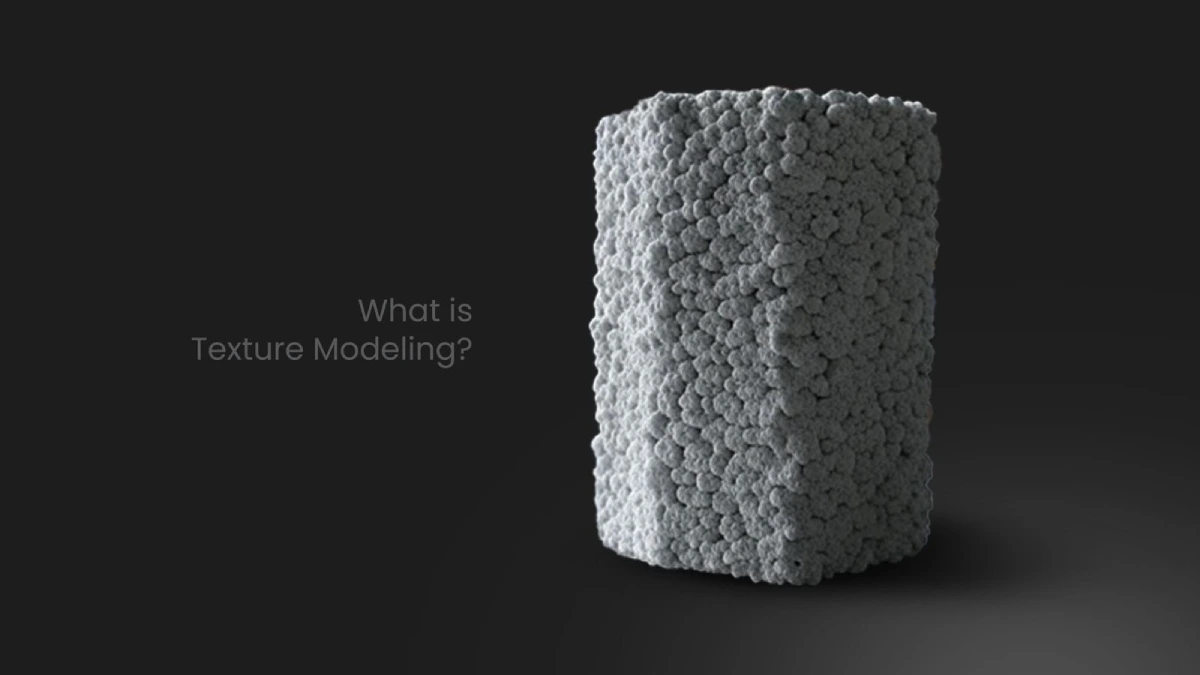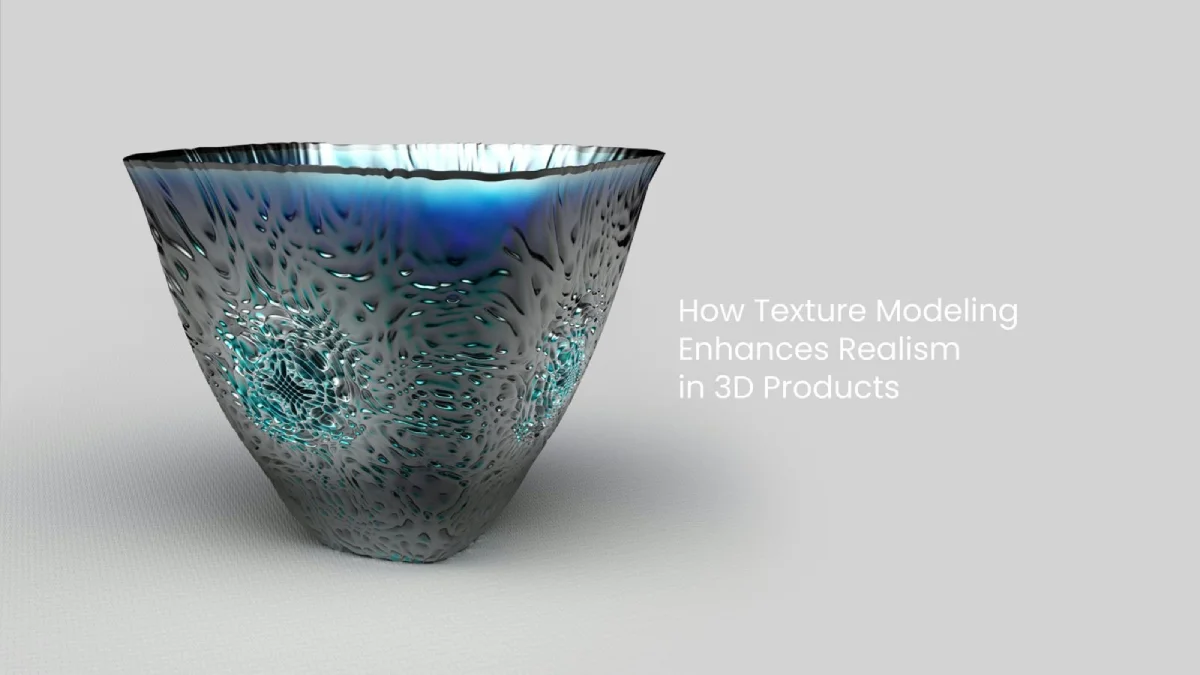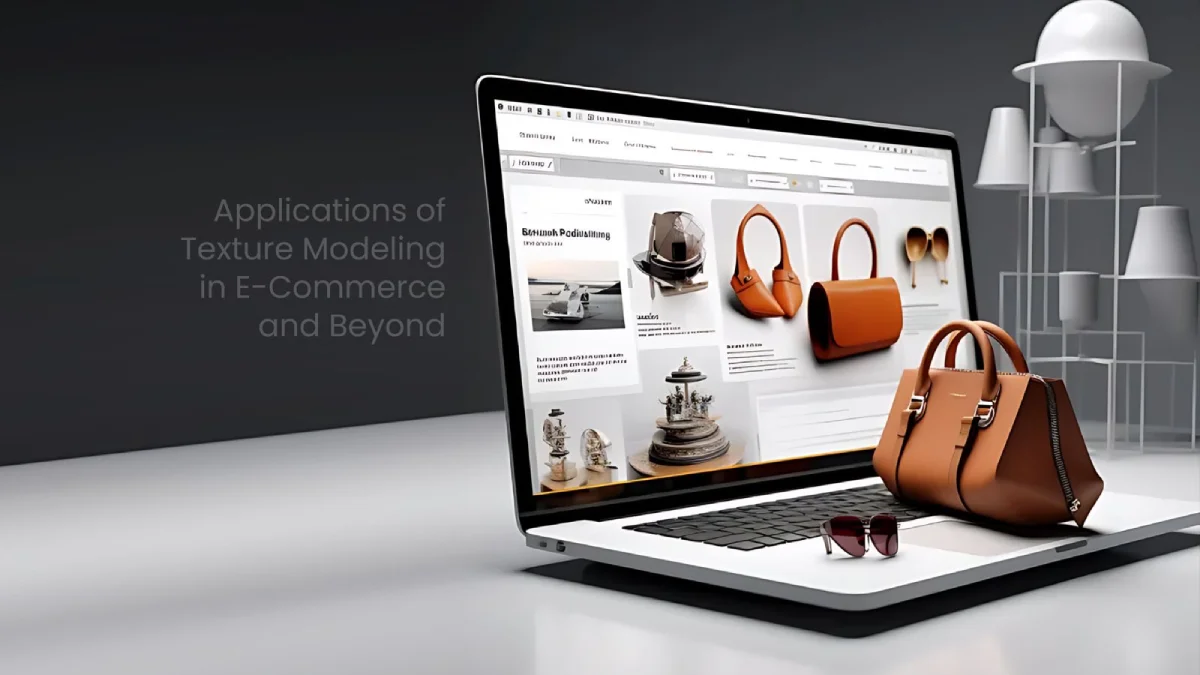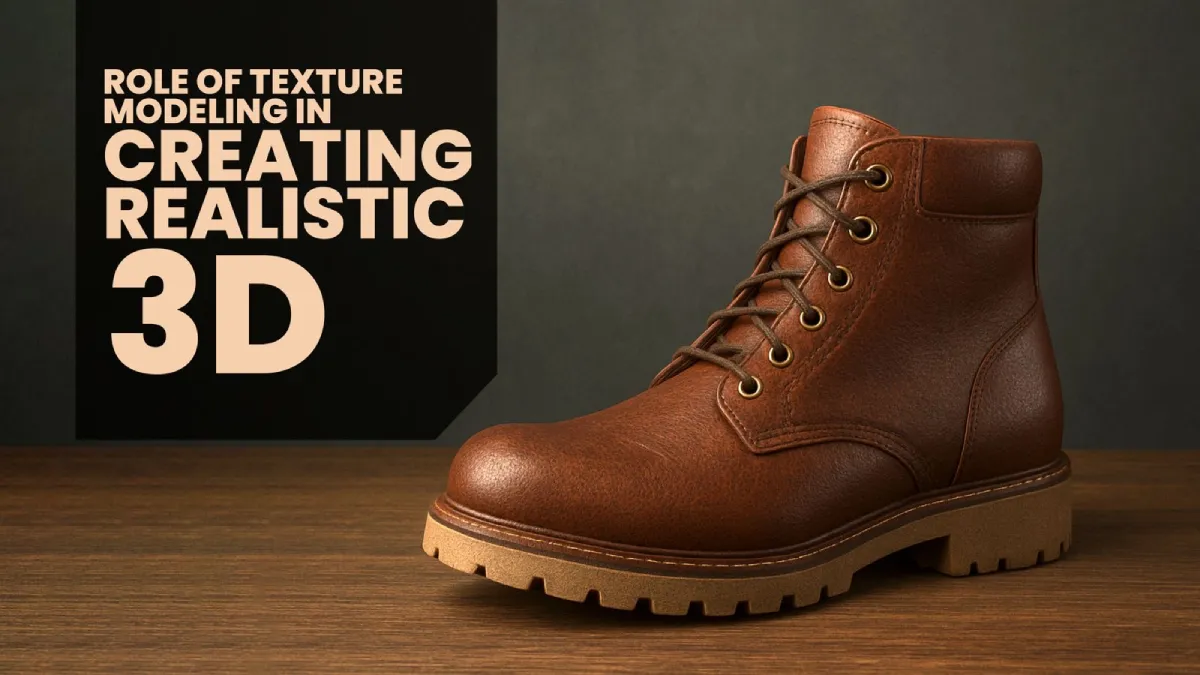With the rapid advancement of technology in the recent years, almost every industry is going through a digital revolution. One of the key digital transformations slowly taking over multiple industries is the widespread use of 3D models and 3D imagery in general.
Not too long ago, using 3D images of products on your ecommerce or design website was unheard of, as it was too expensive and simply not worth it. Well, times have changed. With the arrival of AI and improvement of computing technology, achieving 3D imagery has become significantly cheaper and quicker.
One of the most critical aspects of 3D model is actually called texture modeling. It is an essential part of the 3D modeling process, as this is the stage that transforms monotonous uninteresting 3D objects into vibrant and realistic-looking models.
Through adding and modifying the levels of different components such as light, colors, material, etc, texture modeling enables artists to bridge the gap between artistry and realism.
In this article, we’ll go into detail regarding what texture modeling is, how it improves product imagery, its applications, and finally how The KOW Company can take care of all your texture modeling needs.
What is Texture Modeling?
The term texture modeling does not mean one single function of 3D modeling; it actually indicates an umbrella of multiple functionalities that enables a 3D model to appear realistic.

The process of adding colors, patterns, and tactile characteristics, etc. and enabling them to interact with the object’s surroundings are all parts of the texture modeling process.
Now, as we are getting into the nitty-gritties of 3D modeling, you may come across jargons and terms that seem unfamiliar. Don’t worry, we’ll try our best to keep you in the loop as you proceed along the article.
Texture modeling involves quite a few techniques, which include texture mapping and bump mapping. Texture mapping is basically projecting a 2D image onto a 3D model to give it more detail or even realism.
Think about it this way – imagine you have a cardboard box, and you want it to look like it’s made of wood. Now instead of building a box out of wood which would be timely and expensive, you simply take wrapping paper that is painted to look it wood and wrap it around that box. The process of doing this digitally is called texture mapping.
Bump mapping is also very similar. It is using a 2D projection of an image on a 3D object to make the 3D object appear like it has surface irregularities like bumps. Imagine the same box and same wrapping paper, but now the wrapping paper has cracks and holes painted on it so it looks like the box has cracks and holes in it.
The key thing to remember in both these techniques is that you save time and money by not having to alter the actual 3D model itself.
With the arrival of advanced software like Substance Painter or Blender, applying these techniques has become very easy. Using this software, artists can very quickly apply textures like wood, metal, cloth, etc. onto 3D objects.
The process involves UV mapping, which is essentially projecting a 3D model onto a 2D plane. Imagine the same box from before but you’ve cut up that box so that it lies completely flat on a surface.
Doing this enables artists to paint on textures with much more ease, and the quality of the texture painting also improves significantly.
Texture modeling is an indispensable part of 3D content development process, especially when it comes to generating realistic 3D imaging. Texture modeling determines how light interacts with the surface of an object which is key to making 3D objects look realistic.
How Texture Modeling Enhances Realism in 3D Products
Look around you. Look at every object, especially at the surface. Every surface has imperfections such as blemishes, or scratches or faded paint. These details are what make objects appear realistic.

Think about a metallic surface. If it was uniformly shiny with no imperfections, it simply wouldn’t look realistic. Metal surfaces in reality have scratches, fingerprints, stains, etc. You are more likely to convince someone about the realism of an object with a texture that has imperfections.
When you are thinking about making your 3D models look lifelike, you have to keep these imperfections in mind. This is because the easiest way to apply these imperfections to your 3D models is through texture modeling.
Another important aspect that contributes to the quality of your 3D model is ensuring that light reacts properly to the surface. Relative to an object, the position, intensity and the color a light shining on it can completely change how it looks.
Advanced techniques such as PBR (Physically Based Rendering) allow modelers to make sure that materials react to lighting in a realistic manner. Depending on the surface texture, this technique enables different reactions to light.
For example, a glossy painted surface (like a car) will have very bright, clean and gleaming reflection to direct lighting whereas a grassy surface will absorb more of the light and not be as shiny.
Combine this with bump mapping, and you can easily trick viewers into thinking that the material has meticulously been modeled manually. The combination of these techniques enables modelers to achieve realistic results in a very short time.
Texture modeling also allows for dynamic and varying material properties. Think of a tennis ball. It has both the grassy/furry green surface and the white rubbery surface. Texture modeling enables you to replicate both these type of surfaces into your model at the same time.
Texture modeling utilizes real world imperfections and irregularities to mimic realism and can definitely elevate your modeling skills to the next level.
Applications of Texture Modeling in E-Commerce and Beyond
The arrival of texture modeling has enabled the ecommerce industry to enter a new era of immersion. Ever since ecommerce was introduced, one of the key challenges for buyers was understanding the quality of the product.

The best anyone could do was guess based on the product photography, and quite often the actual product did not live up to the expectations of the buyer. But with texture modeling, 3D images of products look almost identical to the actual product.
This allows buyers to see every wood grain and other tiny little details on the product that they would’ve missed otherwise. The more the customer understands the product quality before buying, the less likely they are to be dissatisfied with it and return it.
The less often the product the product gets returned, the less money the seller loses out on logistical costs. In this way, the ecommerce industry is saving millions if not billions.
In addition to ecommerce, texture modeling adds immense value to other areas as well. Take gaming for example. Texture modeling enables game developers to include detailed and vibrant terrains and structures that add immersion to the game without requiring too much computing power.
Same can be said for architectural visualization and construction in general. Designers can see how different kinds of flooring or texture reacts to different kinds of light. This allows to conduct a trial-and-error process without incurring too much cost.
The impact of texture modeling goes way beyond just these industries. Over the last two decades, CGI and VFX have become an integral part of the movie and TV industry. Now there are studios who solely focus on animation, VFX and CGI and nothing else.
There was a time when CGI was only used in action or sci-fi movies to create effects that would be impossible to create physically. However, these days CGI is being used to create simplest of shots just because it has become so cheap and quick. And of the key reasons behind this process being so cheap and quick is texture modeling.
The use of texture modeling doesn’t just stop here. Whether it be education or healthcare, this technique is regularly being used to generate versatile, high quality visuals which users find to be highly engaging and immersive.
Challenges in Texture Modeling and How to Overcome Them

Of course with any new technology, there will be challenges. Texture modeling is no different to this trend, and some of the common challenges faced in this regard are mentioned below:
Data Dependency – One of the key requirements for textures appearing realistic is that the image that gets projected onto the 3D model has to be of a really high quality. Think about the surface imperfections again. If you see a surface where the imperfections are blurry or pixelated, you can immediately tell that it doesn’t look realistic. Therefore, 3D artists must use high-quality images or utilize photogrammetry.
Specificity Constraints – Texture modeling is only cheap and quick as long as the output is generic. The more requirements or specifications you want to add, the more the workload for the artists, and thus the more time and cost. For example, texture modeling a generic tabletop wooden surface with details is quick. But if you require a particular type of imperfection (like a crack or a chip) of a particular size at a specific spot, the artists would have to draw that in manually, which will cost you money and time.
Learning Curve – In the early stages, you’ll find that learning to texture model is relatively easy. However, you learn very quickly that the standard of texture modeling in the relevant industries is quite high, and making in this industry requires a ton of experience and knowledge of a wide array of software. The advice in this case is to utilize user friendly software like Blender and video content that is available. There are extensive hands on guidelines on youtube these days which are created by seasoned professionals.
Why Choose The KOW Company for Texture Modeling and 3D Visualization?
Over the last decade or so. The KOW Company has become a household name in the field of commercial visual content postproduction. Not too long ago, the company decided to enter the 3D imaging industry as well, and within just a few years it has become a pioneer in all kinds of ecommerce related 3D imaging services.
When it comes to texture modeling, The KOW Company delivers the highest quality of work possible, which has enabled it to build a strong global client portfolio in a very short time. Currently, the company provides 3D imaging services for some of the largest retailers in the world.
The company’s success comes mostly due to delivering world class quality service at a record low cost and turnaround time. This has been made possible through combining highly skilled 3D artists and internally developed Artificial Intelligence processes.
The company introduced Holosnap, an AI-powered platform, which can generate editable 3D models of objects simply from photographs. Once fully commercialized, it is being expected that this technology will expedite 3D modeling processes exponentially.
What makes the KOW Company unique is its client approach. The company works with anyone who has 3D needs and is willing to do anything that it is capable of. This positive and risky attitude towards new projects has enabled the company to grow at an immense rate.
The KOW Company’s commitment to openness, innovation and quality keeps them ahead of the competition. The company is dedicatedly working towards a 3D revolution hoping that 3D imaging technologies will one day be easily available to everyone. This orientation makes this company an ideal choice when it comes to texture modeling.
Conclusion
The arrival of texture modeling has done wonders for the world of 3D content creation. Because of this technology, 3D artists are able to allocate more time towards the truly creative and artistic aspects of their profession instead of spending hours creating a texture.
Starting from movies and gaming all the way to ecommerce and education, texture modeling has become an indispensable tool for any industry that requires visual aids. Not only does this technique increase user immersion and involvement, it also enables artists and organizations with limited resources to access 3D imaging.
Although challenges exist in this field like any other, what is most important is that texture modeling has opened new doors for 3D imaging in terms of creative avenues and possibilities. Proper knowledge and practice of this technique is an essential element of becoming a 3D artist.
Frequently Asked Questions
What is texture modeling in 3D design, and why is it important?
Texture modeling is a technique that allows 3D artists to add surface details to a 3D object. Through texture modeling, you can add surface details like colors, roughness or shininess to an object. The process involves taking a 2D image of a surface and projecting it onto the outside of a 3D object.
Texture modeling allows artists to add realistic details to 3D objects, which adds authenticity and immersion to the viewers. Industries like ecommerce, gaming and entertainment benefit heavily from this technique.
How does texture modeling impact e-commerce product visuals?
3D modelers can replicate lifelike effects onto products using texture modeling. For example, you can add metallic texture to a piece of furniture to convey the fact that the furniture is made of metal.
Similar details like stiches and bumps can be replicated onto ecommerce product surfaces through texture modeling which saves a lot of time compared to manually modeling those details. These added details increase viewer trust and understanding of the product, ultimately improving business for sellers.
What tools are used for texture modeling in 3D products?
It comes down to the level of complexity and standard of the work you’re doing. Substance Painter is perhaps the most popular tool, which allow users to paint on textures onto 3D services. For open source texturing, Blender is probably the most resourceful software out their.
In addition, Maya is the go to software for a lot of artists who are involved in industrial and professional grade 3D imaging work.
Why should I hire The KOW Company for texture modeling?
The KOW Company has extensive expertise and experience in texture modeling due to its skilled workforce as well its AI powered 3D imaging practices. The hardware, software and manpower resources of the company allows it to tackle projects of any levels of scale or complexity.
The KOW Company is a one stop solution for almost any 3D imaging needs including but definitely not limited to texture modeling.
How does texture modeling differ from 3D modeling?
3D modeling is like sculpting or building a shape or a structure from a solid piece of clay. Whereas texture modeling only deals with what you do to the surface of that structure. Whether it is painting something on it or wrapping something on the surface, texture modeling only deals with the surface.
Can texture modeling be applied to industries other than e-commerce?
Absolutely. As mentioned in the article above, texture modeling has extensive use in fields of gaming, movies, animation, architecture, education, healthcare, engineering, etc. Any industry that requires realistic 3-dimensional imaging work can benefit from texture modeling.
Is texture modeling expensive for small businesses or startups?
The entire point of texture modeling is to save money and time from the process of adding realistic surface details to your 3D objects. The process itself being cost-saving should be something that small businesses should consider.
However at the end of the day, it comes down to the complexity and level of detail of the object you’re trying to visualize in 3D. Extremely complex texture modeling tasks can get pricey, but companies like The KOW Company does offer affordable solutions.

